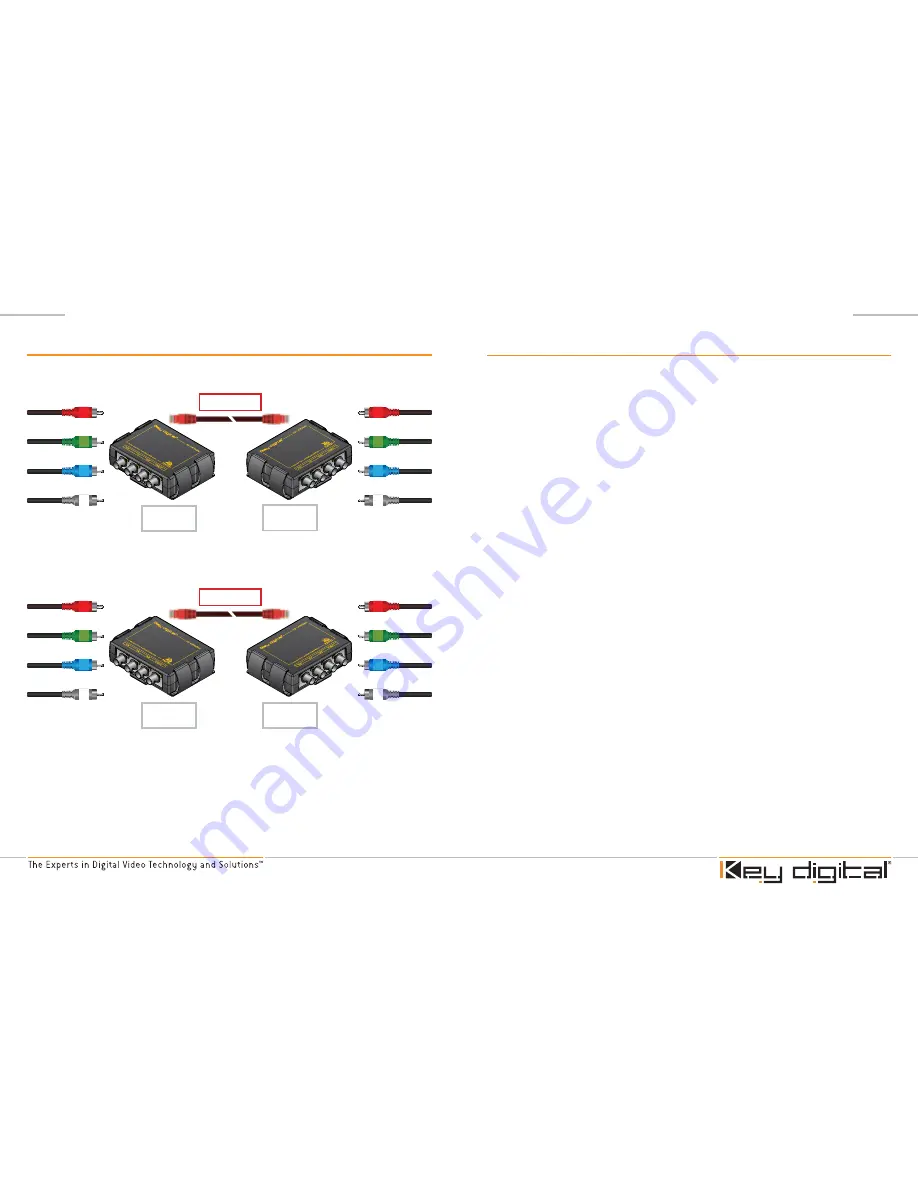
Page
Page
Installation Instructions
1. Find a safe and convenient location for your Analog BobCAT unit.
Before permanently securing the unit or final installation of cabling behind
walls or ceilings, test for proper operation of the unit and the cables in your
system.
2. Connect your Component Video sources to the Component Video ports of
the BobCAT intended as the transmitting device.
Please note that each Analog BobCAT can be used as either the transmitting or
receiving device. Therefore, it makes no difference in the order in which they are
connected. Additionally, any BobCAT unit (whether RCA, BNC connector or Wall
Plate version) is interchangeable and can be used with any other BobCAT version.
3. Connect your Coaxial Digital Audio source to the PCM port of the BobCAT
intended as the transmitting device.
The BobCAT supports any PCM signal, including standard Left/Right digital audio
and Dolby Digital
®
encoded bit streams. If you are not running audio with video
through the BobCAT, simply leave this port disconnected.
4. Connect one end of your CAT 5 cable to the CAT 5 port of the BobCAT
intended as the transmitting device and the other end of your CAT 5 cable to
the CAT 5 port of the BobCAT intended as the receiving device.
Use standard CAT 5 cable for interconnectivity between each set of BobCAT
devices.
5. Connect the Component Video ports of the BobCAT intended as the
receiving device to the Component inputs of your receiving device (display,
switcher, etc…).
6. Connect the PCM port of the BobCAT intended as the receiving device to
the Coaxial Digital Audio inputs of your receiving device (display, A/V receiver,
etc…).
Again, if you are not running audio with video through the BobCAT, simply leave
this port disconnected.
➔
➔
➔
➔
➔
Dolby
®
7.1 Audio Application Example (Four Box Setup)
L
C
R
LS
RS
L side
R side
Sub
Box 1 Tx
Box 1 Rx
Box 2 Tx
Box 2 Rx
CAT5/6 Cable
CAT5/6 Cable
L
C
R
LS
RS
L side
R side
Sub








